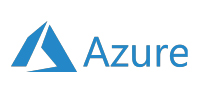
How Panthos Can Help You Reinvent Data Management
At the forefront of technological innovation, Google has once again astounded the world with its

In today’s fast-paced world of technology, businesses seek efficient and scalable solutions for their infrastructure needs. Google Kubernetes Engine (GKE) and GKE Autopilot have emerged as powerful tools, enabling organizations to automate scaling, security patching, and infrastructure maintenance. Let’s explore the benefits and features that make GKE and GKE Autopilot indispensable for client projects.
GKE simplifies the management of containerized applications by offering a managed Kubernetes environment. It eliminates the need for manual configuration and reduces operational complexities. With GKE, teams can focus on application development rather than infrastructure management. GKE Autopilot takes this a step further by fully automating cluster management, including scaling, security patching, and maintenance. This “hands-off” approach enables developers to concentrate on writing code, while Google takes care of the underlying infrastructure.
One of the key advantages of GKE and GKE Autopilot is their ability to automatically scale applications based on demand. By leveraging Kubernetes powerful auto-scaling capabilities, GKE ensures that applications have the resources they need to handle varying workloads. GKE Autopilot takes this a step further by automatically managing node pools, scaling them up or down without manual intervention. This dynamic scaling capability ensures optimal performance and cost-efficiency, as resources are allocated precisely when and where they are required.
Maintaining a secure infrastructure is a top priority for any organization. GKE and GKE Autopilot provide built-in security features that help protect applications and data. GKE offers features such as node identity and role-based access control (RBAC), ensuring secure access to cluster resources. Additionally, GKE Autopilot handles security patching seamlessly, reducing the risk of vulnerabilities caused by outdated software. Regular security updates and patches are applied automatically, freeing up valuable time for teams to focus on critical tasks rather than patch management.
Keeping the underlying infrastructure up to date and reliable is a crucial aspect of any project. GKE and GKE Autopilot simplify infrastructure maintenance by automating tasks such as node updates, patching, and monitoring. With GKE Autopilot, the managed control plane takes care of these maintenance activities, allowing developers to focus on delivering value through their applications. This hands-off approach eliminates manual intervention, reducing the chances of human error and ensuring that the infrastructure is always up to date, reliable, and performant.
GKE and GKE Autopilot empower organizations to automate critical aspects of their infrastructure management. By leveraging these powerful tools, businesses can streamline operations, enhance scalability, and ensure robust security. Whether it’s automating scaling, security patching, or infrastructure maintenance, GKE and GKE Autopilot provide the foundation for reliable and efficient application deployments, enabling businesses to focus on innovation and growth.

At the forefront of technological innovation, Google has once again astounded the world with its

At the forefront of technological innovation, Google has once again astounded the world with its

In today’s fast-paced world of technology, businesses seek efficient and scalable solutions for their infrastructure








We’re here to help. Find out how you can boost your business with the latest in Machine Learning and AI, App or Software Development, Data Integration, BI Analytics, or Cloud Migration.
Let’s have a quick 15-minute chat, or send us a form query and we’ll get back to you ASAP.

The Brisbane developers creating market leading apps and business solutions
Level 1, 8 Clunies Ross Court Brisbane Technology Park Eight Mile Plains Queensland 4113
office@panthos.com.au
Copyright © Mada Media. All rights reserved.